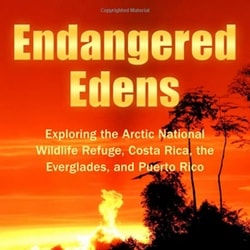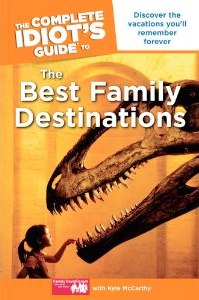
One warning about this book is that if you like Fox News, vote Republican, or have the slightest doubt about the current narrative with respect to climate change, this book is not for you.
Over the years, I have read many novels by Carl Hiaasen, a Floridian who loves his state and hates what is happening to it, and one of his characters is a former Governor named Clinton Tyree, who fights valiantly against development of environmentally sensitive areas, loses, and disappears, leaving behind a resignation letter. He becomes known as ‘Skink’, and becomes a nomad living in the wilderness, eating road kill. Skink appears in many of Hiaasen’s novels, appearing at convenient times to assist one protagonist or another. Imagine my surprise to find out that a ‘skink’ is an actual animal, one that can be found in Puerto Rico. But it moved too fast for Marty Essen to get a photo of it. That didn’t happen too often. This book has hundreds of high-resolution, excellent quality photos of wildlife and plants in the four locations.
The book begins with Puerto Rico, which is described as under environmental pressure due to overpopulation and over-development. Puerto Rico’s population is actually declining and with its desperate economy that can be expected to continue. But the damage has been done and many of the native flora and fauna have experienced declines. The couple saw a lot of smaller animals, some snakes and some exotic birds, and saw a lot of the historical areas of Old San Juan. There is a photo of some cacti growing in a leeward area that confused me because they looked like Saguaro, but they clearly couldn’t be. Puerto Rico is diverse and interesting and, in my opinion, underrated as a destination. And US citizens don’t need a passport to go there.
The next spot they visited was Alaska. While it is written in one chapter, the visit had two parts: a guided tour of parts of the Arctic National Wildlife Refuge, and then a separate visit to the Prudhoe Bay oil field. Their visit to the Arctic National Wildlife Refuge was challenging, in part due to a guide who either couldn’t or wouldn’t slow down and take care of his customers. I have to admit this whole journey holds no appeal for me (I don’t like snow and don’t even like pictures of snow and can barely watch the Winter Olympics on television) but the scenery is stark and beautiful. The local guide going too fast was a problem, especially when the polar bear arrived. That food chain thing again. There were some near misses with their small boat as well, and that water is awfully cold.
After the Refuge, the next target was Prudhoe Bay. There are lots of photos of buildings that don’t look like they belong where they are, and the experience seems to have been pretty emotional. Prudhoe Bay is not a tourist destination, so it seems the point of going there was political. Marty is clearly opposed to drilling for oil in an environmentally sensitive area such as the North Slope.
After Alaska, we next visit the Florida Everglades, a body under increasing pressure from development and now threatened by the prospect of raised sea levels making the marsh water too salty for the flora and fauna that live there. Much of the time in the Everglades was given over to Marty’s evident wish to be eaten by an alligator. He came very close to gators a couple of times and has the photos to prove it. Lots of birds, insects, and a snake appear. They did the Everglades without a local guide, and saved a couple of Russian tourists from an encounter with a (poisonous) water moccasin. My impression is that the Everglades are a place one can visit without a guide, but it helps if you have prior experience with that type of wilderness.
The final chapter was about Costa Rica, which truly resembles a paradise more than the other three places. I’ve known some Americans who moved there to retire, but for one reason or another they all moved back. I understand it is popular with expats nevertheless. This chapter contains some really outstanding nature photography, with many different kinds of animals and birds, along with some dolphins and some spectacular scenery. Some more problems with guides not paying attention to their clients marred the journey slightly. They stayed in one place, at Playa Nicuesa Rainforest Lodge, which sounds absolutely fascinating. Their ‘room’ was actually open-air, and deep within the rainforest, completely private, and wildlife were steps away.
In summary, this book has some really first-rate photography of things you don’t see every day, and has interesting personal narratives of the couple’s trips to the four destinations. I enjoyed reading it, apart from a few political rants, and learned quite a bit from it, even picking up a few tips about photography. At $19.95, it’s a bargain. is a book about several quite different environments which have unique flora and fauna and which are under pressure from various sources. Marty Essen and his wife Deb traveled to these four places in recent years, took a considerable number of photos, and encountered some interesting people, and spent a fair amount of time not at the top of the food chain, something I have no interest in doing. The four areas he explored are Puerto Rico, the Alaska Arctic National Wildlife Refuge, the Everglades (Florida) and Costa Rica. I have only been to Puerto Rico, and I have no plans to go to the Arctic, but Costa Rica looks interesting, as does the Everglades. I have not been to the Everglades, but I think a couple of my golf balls may be there.
One warning about this book is that if you like Fox News, vote Republican, or have the slightest doubt about the current narrative with respect to climate change, this book is not for you.
Over the years, I have read many novels by Carl Hiaasen, a Floridian who loves his state and hates what is happening to it, and one of his characters is a former Governor named Clinton Tyree, who fights valiantly against development of environmentally sensitive areas, loses, and disappears, leaving behind a resignation letter. He becomes known as ‘Skink’, and becomes a nomad living in the wilderness, eating road kill. Skink appears in many of Hiaasen’s novels, appearing at convenient times to assist one protagonist or another. Imagine my surprise to find out that a ‘skink’ is an actual animal, one that can be found in Puerto Rico. But it moved too fast for Marty Essen to get a photo of it. That didn’t happen too often. This book has hundreds of high-resolution, excellent quality photos of wildlife and plants in the four locations.
The book begins with Puerto Rico, which is described as under environmental pressure due to overpopulation and over-development. Puerto Rico’s population is actually declining and with its desperate economy that can be expected to continue. But the damage has been done and many of the native flora and fauna have experienced declines. The couple saw a lot of smaller animals, some snakes and some exotic birds, and saw a lot of the historical areas of Old San Juan. There is a photo of some cacti growing in a leeward area that confused me because they looked like Saguaro, but they clearly couldn’t be. Puerto Rico is diverse and interesting and, in my opinion, underrated as a destination. And US citizens don’t need a passport to go there.
The next spot they visited was Alaska. While it is written in one chapter, the visit had two parts: a guided tour of parts of the Arctic National Wildlife Refuge, and then a separate visit to the Prudhoe Bay oil field. Their visit to the Arctic National Wildlife Refuge was challenging, in part due to a guide who either couldn’t or wouldn’t slow down and take care of his customers. I have to admit this whole journey holds no appeal for me (I don’t like snow and don’t even like pictures of snow and can barely watch the Winter Olympics on television) but the scenery is stark and beautiful. The local guide going too fast was a problem, especially when the polar bear arrived. That food chain thing again. There were some near misses with their small boat as well, and that water is awfully cold.
After the Refuge, the next target was Prudhoe Bay. There are lots of photos of buildings that don’t look like they belong where they are, and the experience seems to have been pretty emotional. Prudhoe Bay is not a tourist destination, so it seems the point of going there was political. Marty is clearly opposed to drilling for oil in an environmentally sensitive area such as the North Slope.
After Alaska, we next visit the Florida Everglades, a body under increasing pressure from development and now threatened by the prospect of raised sea levels making the marsh water too salty for the flora and fauna that live there. Much of the time in the Everglades was given over to Marty’s evident wish to be eaten by an alligator. He came very close to gators a couple of times and has the photos to prove it. Lots of birds, insects, and a snake appear. They did the Everglades without a local guide, and saved a couple of Russian tourists from an encounter with a (poisonous) water moccasin. My impression is that the Everglades are a place one can visit without a guide, but it helps if you have prior experience with that type of wilderness.
The final chapter was about Costa Rica, which truly resembles a paradise more than the other three places. I’ve known some Americans who moved there to retire, but for one reason or another they all moved back. I understand it is popular with expats nevertheless. This chapter contains some really outstanding nature photography, with many different kinds of animals and birds, along with some dolphins and some spectacular scenery. Some more problems with guides not paying attention to their clients marred the journey slightly. They stayed in one place, at Playa Nicuesa Rainforest Lodge, which sounds absolutely fascinating. Their ‘room’ was actually open-air, and deep within the rainforest, completely private, and wildlife were steps away.
In summary, Endangered Edens has some really first-rate photography of things you don’t see every day, and has interesting personal narratives of the couple’s trips to the four destinations. I enjoyed reading it, apart from a few political rants, and learned quite a bit from it, even picking up a few tips about photography. At $19.95, it’s a bargain.
- Book Your Accommodation HERE
- Buy Travel Insurance
- Search for Great Tours HERE
- Get a Car Rental

 Book Review – “Global Remains” by Michael Clinton
Book Review – “Global Remains” by Michael Clinton Book Review – “Getting Out Of Auto” by Bethany Salvon
Book Review – “Getting Out Of Auto” by Bethany Salvon Book Review: The Complete Idiot’s Guide to the Best Family Destinations
Book Review: The Complete Idiot’s Guide to the Best Family Destinations Book Review: Smart Spanish for Tontos Americanos by Hamer and Diez
Book Review: Smart Spanish for Tontos Americanos by Hamer and Diez
